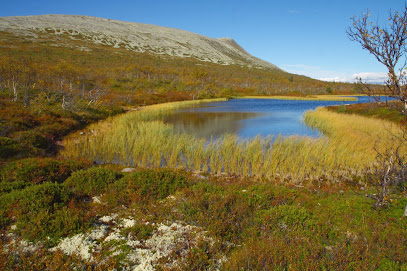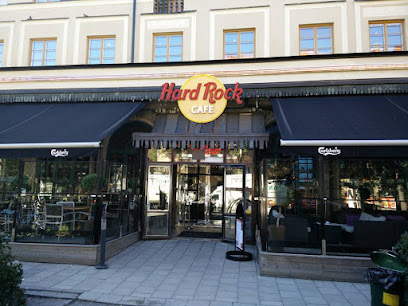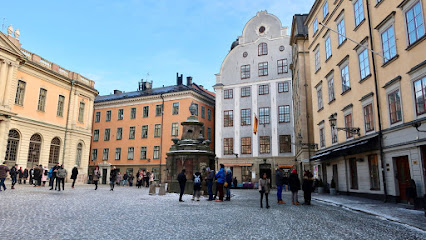
Sarek National Park: The Wild Heart of Swedish Lapland
Explore Sarek National Park, where Sweden's untamed wilderness awaits with its majestic peaks, pristine rivers, and incredible wildlife in the heart of Lapland.
Sarek National Park, located in the remote region of Swedish Lapland, is a haven for nature enthusiasts and adventure seekers. Known for its rugged terrain, the park is home to some of Sweden’s highest peaks and vast glaciers. It’s a land where the northern lights dance in winter and the midnight sun shines in summer. Sarek offers a true wilderness experience. With no marked trails and few facilities, it’s perfect for those looking to disconnect and immerse themselves in nature. The park is rich in wildlife, including reindeer, moose, and the elusive wolverine. Bird watchers will delight in spotting golden eagles and other rare species. The park’s stunning landscape features deep valleys, wild rivers, and lush alpine meadows. It’s a paradise for trekkers and mountaineers. While it can be challenging, the rewards are immense: breathtaking views, pristine nature, and a sense of solitude that’s hard to find elsewhere. Whether you’re an experienced hiker or just love the great outdoors, Sarek National Park promises an unforgettable adventure.
Local tips in Sarek National Park
- Visit in summer for milder weather and the midnight sun, or in winter for a chance to see the northern lights.
- Bring all necessary supplies, as there are no facilities or marked trails within the park.
- Consider hiring a local guide if you are unfamiliar with navigating in such remote wilderness.
- Be prepared for rapidly changing weather conditions; pack appropriate gear for both rain and snow.
- Respect the natural habitat and wildlife. Leave no trace and carry out all your waste.
Sarek National Park: The Wild Heart of Swedish Lapland
Sarek National Park, located in the remote region of Swedish Lapland, is a haven for nature enthusiasts and adventure seekers. Known for its rugged terrain, the park is home to some of Sweden’s highest peaks and vast glaciers. It’s a land where the northern lights dance in winter and the midnight sun shines in summer. Sarek offers a true wilderness experience. With no marked trails and few facilities, it’s perfect for those looking to disconnect and immerse themselves in nature. The park is rich in wildlife, including reindeer, moose, and the elusive wolverine. Bird watchers will delight in spotting golden eagles and other rare species. The park’s stunning landscape features deep valleys, wild rivers, and lush alpine meadows. It’s a paradise for trekkers and mountaineers. While it can be challenging, the rewards are immense: breathtaking views, pristine nature, and a sense of solitude that’s hard to find elsewhere. Whether you’re an experienced hiker or just love the great outdoors, Sarek National Park promises an unforgettable adventure.
When is the best time to go to Sarek National Park?
Unmissable attractions to see
Tiveden National Park
Explore the stunning landscapes of Tiveden National Park, a premier hiking and nature destination in Sweden's wilderness.

Fulufjället National Park
Explore the breathtaking Fulufjället National Park, a natural wonder in Sweden with stunning landscapes, diverse wildlife, and rich cultural history.

Kosterhavet National Park
Discover Kosterhavet National Park, Sweden's first marine national park, where stunning landscapes and rich biodiversity await your exploration.

Greater Mosse National Park
Experience the serene beauty of Greater Mosse National Park, Sweden's largest mire, with diverse wildlife and picturesque hiking trails.

Norra Kvills nationalpark
Experience the breathtaking beauty and diverse wildlife of Norra Kvills National Park, a true gem of Sweden's natural landscape.

Sonfjället National Park
Discover the untouched beauty of Sonfjället National Park in Sweden, a paradise for nature lovers with hiking trails, wildlife, and breathtaking landscapes.

Tresticklan National Park
Discover Tresticklan National Park, a hidden gem in Sweden, where serene landscapes, diverse wildlife, and endless outdoor adventures await.

Hamra National Park
Explore the enchanting landscapes and diverse wildlife of Hamra National Park, a gem in Sweden’s collection of natural wonders.

Färnebofjärden National Park
Explore Färnebofjärden National Park's stunning landscapes, diverse wildlife, and endless outdoor adventures in the heart of Sweden.

Garphyttans Nationalpark
Explore the breathtaking beauty and tranquility of Garphyttans Nationalpark, Sweden's hidden gem for hiking and nature lovers.

Gotska Sandön National Park
Explore Gotska Sandön National Park, Sweden's hidden gem with breathtaking landscapes, rich wildlife, and endless outdoor adventures.

Ängsö National Park
Discover the natural wonders and rich wildlife of Ängsö National Park, a tranquil escape just outside of Stockholm, Sweden.

Töfsingdalen National Park
Experience the untouched beauty of Töfsingdalen National Park, a natural gem in Sweden offering breathtaking landscapes and outdoor adventures.

Djurö National Park
Explore Djurö National Park: A Natural Wonderland of Stunning Landscapes and Diverse Wildlife in Sweden's Pristine Wilderness.

Markets, malls and hidden boutiques
Smålandet Moose Safari
Discover the magic of moose and more at Smålandet Moose Safari, a premier wildlife park in southern Sweden, perfect for families and nature lovers.

Tiveden National Park
Explore Tiveden National Park, a breathtaking Swedish wilderness filled with hiking trails, crystal-clear lakes, and diverse wildlife for nature lovers.

Fulufjället National Park
Explore the stunning landscapes and rich wildlife of Fulufjället National Park, Sweden's premier destination for nature enthusiasts and adventure seekers.

Greater Mosse National Park
Explore Greater Mosse National Park, a serene national treasure in Sweden, known for its breathtaking wetlands and diverse wildlife.

Old Town Polkagriskokeri AB
Discover the charm of Old Town Polkagriskokeri AB, a candy store and handicraft museum where Swedish sweets come to life.

Garphyttans Nationalpark
Explore the breathtaking landscapes and rich biodiversity of Garphyttans Nationalpark, a national treasure in Sweden perfect for hiking and outdoor adventures.

Ängsö National Park
Discover the stunning landscapes and rich biodiversity of Ängsö National Park, a natural wonder just outside Stockholm.

WildSweden
Discover Sweden's breathtaking wilderness through guided tours and outdoor adventures with WildSweden, where nature comes alive.

Prästgården Annerstad
Discover the flavors of Sweden at Prästgården Annerstad, a delightful farm shop offering local produce, homemade goods, and a taste of tradition.

Apans Andra Hand
Explore Apans Andra Hand in Stockholm for a treasure trove of vintage clothing and unique second-hand finds, perfect for eco-conscious travelers.

Essential bars & hidden hideouts
Aifur
Experience the best of Scandinavian cuisine at Aifur in Stockholm, where tradition meets modern culinary artistry in an inviting atmosphere.

Hard Rock Cafe
Discover the ultimate fusion of American cuisine and rock 'n' roll culture at Hard Rock Cafe Stockholm, where every meal is a celebration.

Kvarnen
Experience the heart of Swedish culture at Kvarnen, a lively bar and restaurant in Stockholm, known for its authentic cuisine and vibrant nightlife.

ICEBAR Stockholm by ICEHOTEL
Discover the world's first permanent ice bar in Stockholm, where chilling cocktails and stunning ice sculptures create a unique experience.

Himlen
Discover Himlen in Stockholm: An exquisite fine dining experience with breathtaking views and a sophisticated ambiance.

Pharmarium
Discover Pharmarium in Stockholm for an unforgettable cocktail experience that blends history, artistry, and unique flavors in every glass.

Röda Sten Restaurang
Experience the culinary delight of Röda Sten Restaurang in Gothenburg, where art meets flavor and unforgettable views.

Rockbaren
Experience the vibrant nightlife of Gothenburg at Rockbaren, where rock music and good vibes collide in a lively bar atmosphere.

Boulebarstore Rålambshov
Discover Boulebarstore Rålambshov, where French cuisine meets fun boules games amidst Stockholm's stunning natural beauty.

Beerista
Experience the fusion of gourmet cuisine and craft beers at Beerista, Gothenburg's vibrant gastropub, where every bite is a celebration of local flavors.

Tjoget
Experience the vibrant atmosphere and exquisite cuisine at Tjoget, Stockholm's premier bar and restaurant, where every visit is a culinary adventure.

The Bishops Arms - Park Avenue Gbg
Experience the best of English gastropub culture in Gothenburg at The Bishops Arms - Park Avenue, where flavors and hospitality unite.

View Skybar & Restaurant
Experience Gothenburg's skyline dining at View Skybar & Restaurant, where modern European cuisine meets breathtaking views and vibrant nightlife.

Cuckoo's Nest
Experience the taste of modern European cuisine at Cuckoo's Nest, where delightful flavors meet stunning waterfront views in Gothenburg.

River Restaurant On The Pier
Experience the elegance of fine dining with stunning waterfront views at River Restaurant On The Pier in Gothenburg.

Local Phrases about Sarek National Park
-
- HelloHej
[hey] - GoodbyeAdjö
[ad-yo] - YesJa
[ya] - NoNej
[nay] - Please/You're welcomeSnälla/Tack
[snell-la/tak] - Thank youTack
[tak] - Excuse me/SorryUrsäkta
[ur-sak-ta] - How are you?Hur mår du?
[hoor mor doo] - Fine. And you?Bra. Och du?
[bra. okh doo] - Do you speak English?Talar du engelska?
[talar doo eng-els-ka] - I don't understandJag förstår inte
[yah for-stor in-te]
- HelloHej
-
- I'd like to see the menu, pleaseJag skulle vilja se menyn, tack
[yah skool-luh vil-ya say men-in, tak] - I don't eat meatJag äter inte kött
[yah ay-ter in-te chut] - Cheers!Skål!
[skol] - I would like to pay, pleaseJag skulle vilja betala, tack
[yah skool-luh vil-ya be-ta-la, tak]
- I'd like to see the menu, pleaseJag skulle vilja se menyn, tack
-
- Help!Hjälp!
[yelp] - Go away!Gå bort!
[go bor-t] - Call the Police!Ring polisen!
[ring po-lee-sen] - Call a doctor!Ring en läkare!
[ring en le-ka-re] - I'm lostJag är vilse
[yah air vil-se] - I'm illJag är sjuk
[yah air shoook]
- Help!Hjälp!
-
- I'd like to buy...Jag skulle vilja köpa...
[yah skool-luh vil-ya sher-pa] - I'm just lookingJag tittar bara
[yah tee-tar bar-a] - How much is it?Vad kostar det?
[vad kus-tar det] - That's too expensiveDet är för dyrt
[det air for deert] - Can you lower the price?Kan du sänka priset?
[kan doo sen-ka pre-set]
- I'd like to buy...Jag skulle vilja köpa...
-
- What time is it?Vad är klockan?
[vad air klok-an] - It's one o'clockKlockan är ett
[klok-an air et] - Half past (10)Halv tio
[halv tee-oh] - MorningMorgon
[mor-gon] - AfternoonEftermiddag
[ef-ter-meed-dag] - EveningKväll
[kvel] - YesterdayIgår
[ee-gor] - TodayIdag
[ee-dag] - TomorrowImorgon
[ee-mor-gon] - 1ett
[et] - 2två
[tvoh] - 3tre
[treh] - 4fyra
[feer-a] - 5fem
[fem] - 6sex
[seks] - 7sju
[shoo] - 8åtta
[ot-ta] - 9nio
[nee-oh] - 10tio
[tee-oh]
- What time is it?Vad är klockan?
-
- Where's a/the...?Var finns en/den...?
[var fins en/den] - What's the address?Vad är adressen?
[vad air ad-res-sen] - Can you show me (on the map)?Kan du visa mig (på kartan)?
[kan doo vee-sa may (po kar-tan)] - When's the next (bus)?När går nästa (buss)?
[nair gor nes-ta (boos)] - A ticket (to ....)En biljett (till ....)
[en bil-yet (till)]
- Where's a/the...?Var finns en/den...?
History of Sarek National Park
-
The Sami people, indigenous to the region, have lived in and around what is now Sarek National Park for thousands of years. They are known for their unique nomadic lifestyle, primarily herding reindeer across vast expanses of land, including the harsh terrains of Sarek. The Sami culture is deeply intertwined with the natural environment, and their traditional knowledge of the area remains invaluable.
-
Sarek National Park was established in 1909, making it one of the oldest national parks in Europe. The park was created to preserve the unique Arctic landscape, its flora and fauna, and the traditional lifestyle of the Sami people. It covers an area of about 1,970 square kilometers and features rugged mountains, deep valleys, and some of Sweden's largest glaciers.
-
Throughout the 19th and 20th centuries, Sarek attracted numerous scientific expeditions. Notably, the Swedish geologist and explorer Axel Hamberg conducted extensive research in the region, documenting its geology, climate, and ecosystems. His work laid the foundation for modern understanding of the area's natural history and significantly contributed to the field of Arctic research.
-
During World War II, the remote and rugged terrain of Sarek served as a strategic hideout for resistance movements. The park's challenging landscape provided a natural fortress against enemy forces. While not heavily documented, tales of clandestine operations and hidden supply routes through Sarek have become part of local lore.
-
In 1996, the Laponian Area, which includes Sarek National Park, was designated a UNESCO World Heritage Site. This recognition was due to the region's outstanding natural beauty and its cultural significance as the homeland of the Sami people. The designation has helped to further protect the park and promote sustainable tourism.
-
Today, Sarek National Park is managed by the Swedish Environmental Protection Agency. Modern conservation efforts focus on preserving the park's pristine wilderness and supporting the traditional lifestyles of the Sami. Efforts include monitoring wildlife populations, protecting habitats, and promoting eco-friendly tourism practices.
Sarek National Park Essentials
-
Sarek National Park is located in the northern part of Sweden, within the Lapland region. The nearest major airport is Kiruna Airport, approximately 180 kilometers away. From Kiruna, you can take a train or bus to the town of Gällivare, which serves as a gateway to the park. From Gällivare, you can hire a taxi or take a bus to the village of Kvikkjokk or Ritsem, which are common starting points for entering the park. Alternatively, you can drive to these villages if you have a rental car.
-
Within Sarek National Park, there are no roads or established trails, making it a true wilderness experience. The most common way to explore the park is on foot, so be prepared for extensive hiking and possibly some climbing. Given the remote nature of the park, it is advisable to hire a local guide if you are not an experienced hiker. Outside the park, public transportation options such as buses and trains are available to reach nearby villages and towns.
-
The official currency in Sweden is the Swedish Krona (SEK). Credit cards are widely accepted in the towns and villages surrounding Sarek National Park. However, it is advisable to carry some cash, especially if you plan to make purchases in small shops or need to pay for services in remote areas. ATMs are available in larger towns like Gällivare, but not in the park itself.
-
Sarek National Park is generally safe for tourists, but it is a remote and rugged wilderness area. Ensure you are well-prepared with appropriate gear, maps, and knowledge of the terrain. There are no high-crime areas targeting tourists in or around the park. However, always take standard precautions such as keeping an eye on your belongings and avoiding isolated areas at night. Wildlife, such as bears and moose, can be encountered, so it is essential to know how to safely handle such situations.
-
In case of an emergency, dial 112 for immediate assistance. Be aware that mobile phone coverage may be limited in the park. It is highly recommended to carry a satellite phone or a personal locator beacon. Inform someone about your itinerary and expected return time before heading into the park. The nearest medical facilities are located in Gällivare, so consider bringing a comprehensive first-aid kit. Travel insurance that covers medical evacuation is also advisable.
-
Fashion: Do wear layered clothing suitable for cold and wet weather. Avoid wearing cotton, as it retains moisture and can lead to hypothermia. Religion: There are no specific religious customs to observe, but always be respectful of local traditions. Public Transport: Do plan your transportation in advance, as services can be infrequent. Don't rely solely on public transport to get around once inside the park. Greetings: Do greet people with a friendly 'Hej' (Hello). Swedes appreciate politeness. Eating & Drinking: Do try local delicacies like reindeer meat and Arctic char. Don't leave any waste behind; always adhere to the Leave No Trace principles.
-
To experience Sarek National Park like a local, consider visiting during the shoulder seasons of late spring or early autumn when the park is less crowded but still accessible. Engage with local Sami communities to learn about their culture and traditions. Participate in guided tours or activities such as fishing and dog sledding for a unique experience. Always respect the natural environment and wildlife, and follow all regulations to preserve the park's pristine condition.
Nearby Cities to Sarek National Park
-
Things To Do in Karlstad
-
Things To Do in Oslo
-
Things To Do in Gothenburg
-
Things To Do in Skagen
-
Things To Do in Frederikshavn
-
Things To Do in Örebro
-
Things To Do in Jönköping
-
Things To Do in Linköping
-
Things To Do in Kristiansand
-
Things To Do in Aalborg
-
Things To Do in Norrköping
-
Things To Do in Västerås
-
Things To Do in Randers
-
Things To Do in Viborg
-
Things To Do in Aarhus








